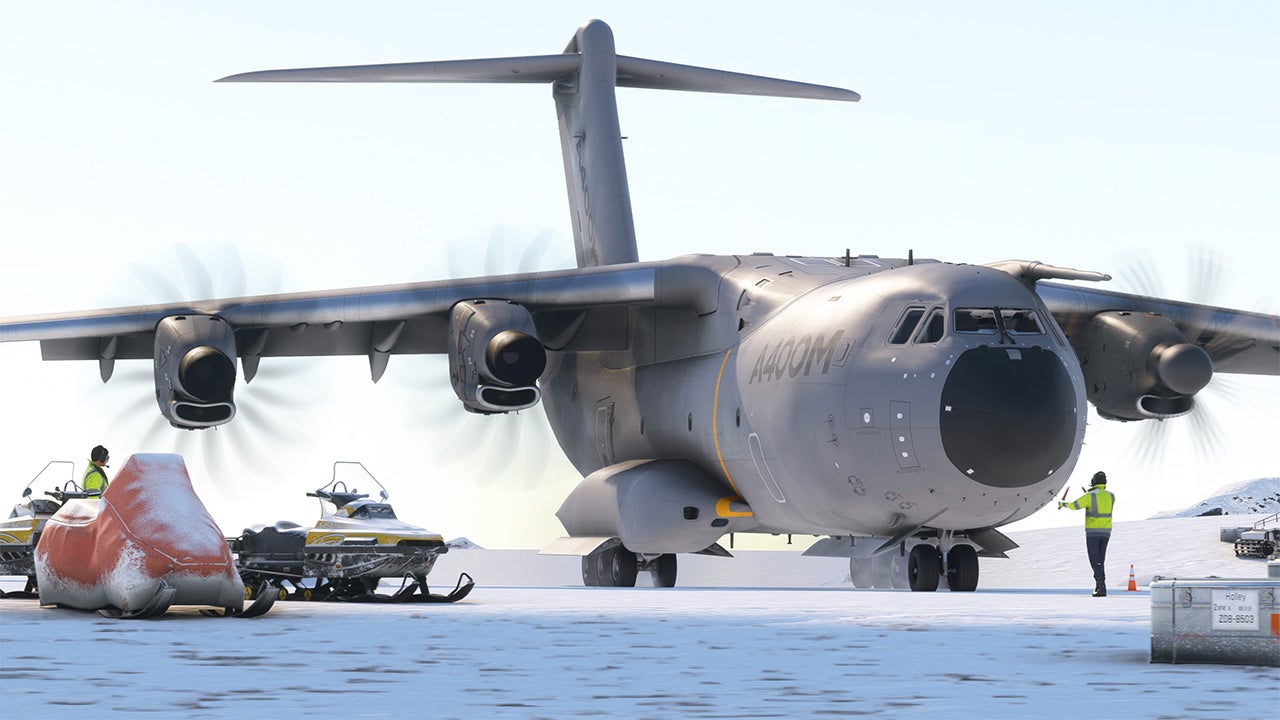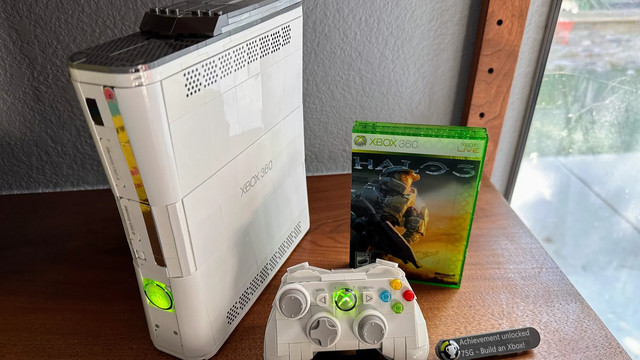In 2020, Microsoft Flight Simulator gave us the world. In 2024, Microsoft Flight Simulator is letting us live in it. I was at the preview event for MSFS 2020 back in September 2019 and I couldn't believe what I had seen, and after playing it for several hundred hours over the last four years, I was having a hard time imagining what a new version could add that would bring the same sense of awe I had the first time I experienced the world at my fingertips. After my first time playing Microsoft Flight Simulator 2024, though, I'm honestly more excited for MSFS 2024 than I was after my initial hands-on with the 2020 game five years ago.
Everything MSFS currently does well has been improved for 2024. Load times, weather effects, the physics of your aircraft – there's just so much more now. Even the ground, which you are very much not supposed to see a lot of, has had its realism cranked up massively. MSFS 2024 took the literal globe-spanning scope of its predecessor and zeroed in on making it feel closer to the actual planet upon which we all live and breathe.
Not Just a Job: A Career
Career mode is easily the biggest addition to MSFS 2024, and it arose directly from community feedback. Simmers asked for structured challenges in MSFS, and career mode was a natural fit.
"Very soon after the launch, we did several surveys," Asobo Studio Chief Creative Office David Dedeine said, "and what was amazing about them is everyone across the board, from super hard-core simmers to what we call digital tourists" were asking for "more purpose and goals."
The defining mode of the new MSFS 2024 experience was originally proposed for MSFS 2020, but for a slew of reasons, it never made it into the final sim. But the seed of career mode goes back even further. Deidene said he recently found a development document from 2017 that was one of the earliest mentions of the concept.
"But we had to focus on 2020 first," he said, noting that the early survey gave the team the proof they needed to move forward with career mode. "Everybody wants to do this. We wanted to do it. Let's go for it."
Career mode is much more open than I had anticipated. There's no pinned coordinate on the map to start your journey. You build your avatar and start at any airport in the entire world. You meet your mentor and take off on a familiarization flight. Deidene promised the openness of the mode means you can "basically play an infinite number of times."
The interface itself is familiar to anyone who's been gaming for any period of time: it looks like the traditional skill-tree you might find in a Spider-Man game, for example, but it tracks your aviation certifications. You're not spending skill points to unlock a super power, but you are spending in-game credits you earn while doing jobs as an aviator. Getting your certification requires proving yourself before you're eligible to take an exam. That examination costs "money," earned doing jobs for your chosen career path and getting evaluated.
For example, you might be a private pilot tasked with taking a mother and her son from Aspen to LAX. A smooth flight and subsequent landing will impress your customers, and how much you earn is based on your abilities and evaluations from the simulated customers. Not only is that in-game currency system tied to your exam fees, but you can also use it to buy your own airplanes and hangars, hire your own staff, and move from apprentice to master. I'm already planning out my world-spanning commercial airline, and so far I haven't taken a single flight in career mode. And that's just one option! There are options for air rescue careers, racing, agriculture, and more.
If you'd rather gamify the sim experience without pouring yourself into career mode, there's a new challenge league. Challenges are something that's not entirely new to MSFS: since the launch of 2020, there have been landing challenges as well as challenges tied into Top Gun: Maverick and Dune: Part Two. What's new in 2024 is the specific challenge league. Every week, three new challenges are introduced, and you compete against the rest of the community for clout on the leaderboards. Scores designate what level you compete at, from bronze to gold, and each is designed to last between two and three minutes.
I tried the F/A-18 Hornet race through the Grand Canyon during my hands-on with MSFS 2024, and what I really loved about it was how, in spite of the challenge itself being somewhat fanciful (I don't think the DoD or the National Park Service would appreciate the noise and danger posed), the flight model remains the same. The simulation of the aircraft hasn't been tuned for a more "arcade-like" experience. You have to complete the challenges given all the aerodynamics, handling, and physics found in the greater sim. I was unable to unseat the winner from his world-record pace, but to be fair, he had an aircraft-appropriate flight stick and I was racing with a yoke. Regardless, it was a lot of fun and dammit if I can't wait to race in the final game with my Thrustmaster flight stick and throttle.
New Airplanes Galore
As was the case with MSFS 2020, there multiple versions with different levels of content that will be available when MSFS 2024 releases: standard, deluxe, premium deluxe and aviator. The standard version alone will have 30 new aircraft, from helicopters to a personal VTOL, hot air balloons, helicopters, and more. The high-end aviator edition ships with 125 new aircraft and 160 new aiports. And all versions have upgraded versions of MSFS 2020 airplanes and airports.

One of my all-time favorites, the A-10 Warthog, is coming to the standard edition. I took some time to fly one from its home base at Davis-Monthan AFB in Tucson, Arizona and was really impressed with how it feels and flies, as well as the level of detail in Davis-Monthan's famous aircraft boneyard, a monstrous graveyard of decommissioned airplanes inside the base.
The deluxe and premium deluxe editions include more planes and more airports, and are totally optional, but I pumped my fist and said "yes!" audibly during the presentation when they revealed the C-17 Globemaster is coming to MSFS 2024. I've never flown one before, but I've been inside of them during my time in the Air Force and they've always held a special place in my heart, so I'm really looking forward to finally sitting in the cockpit and recreating my 2001 flight from Bahrain to the Azores and then from the Azores back to US shores. The one plane I had hoped to see, the Lockheed C-130, was not shown, but I'm extremely hopeful that Lockheed-Martin will eventually realize how beneficial it is to me, personally, to have their plane available as an official sim asset.
From the Ground, Up
When I say everything has been improved upon, it doesn't really do justice to the scale at which MSFS 2024 builds on its predecessor. For one thing, as I mentioned earlier, the ground has been massively overhauled for MSFS 2024. The detail on the ground in any given area has increased 4,000 times over 2020. What that means for you and I is basically a lot of places we can land in now in MSFS 2020 aren't going to, uh… fly… in MSFS 2024.
As an example of just how much of a difference the new ground modeling makes, Asobo Studio CEO and co-founder Sebastian Wloch showed us a small hill at the end of a runway as it currently appears in MSFS 2020. It has the contours of a skate ramp, something you could almost certainly roll up fairly easily if one were so inclined. He then showed us the same location in MSFS 2024. That gentle bowl shape was now littered with uneven knobs and protrusions, looking more like a partially-covered rock formation than a smooth and even surface. In other words, if you tried to roll over it, you'd almost certainly do a whole lot of damage to your aircraft.
Because of the new level of detail afforded by the MSFS 2024 engine, landings now need to be more purposeful. Soon the days of landing the Boeing 747 in a random field will be but a memory, because in addition to the surface modeling bringing rougher and more realistic terrain to MSFS 2024, the ground itself will react more realistically.
Snow, mud, even grass will show wheel marks if you roll through it, and if you try and land a massive aircraft on a muddy river bank, it's going to react in the way you'd probably expect it to: not well. This rougher terrain will even affect your aircraft. We saw a brief glimpse of a bush plane with its over-sized tires caked with mud. I wanted to know if that was just an illustration or an expected behavior, so I asked Wlong if mud really sticks to your tires. "Oh yes," he confirmed.
"The planes will wear and tear. They'll get dirty," Wlong continued. "The way you fly or hard landings, the way you brake, these things will impact the systems and instantly affect performance." As an example, Wlong explained the braking system in MSFS 2024: "We simulate carbon or metal brakes. They both react completely differently to braking.
Carbon is more efficient hot, metal brakes are less efficient hot." Depending on which your plane has, you need to brake differently. "Basically, the temperature is going to build up during your braking," Wlong continued, and the more they're used, "the more they wear, the less efficient they get."
This means there are both short and long-term impacts to your aircraft, and not just on the brakes. "We have that for tires, for engines, for many things," in MSFS 2024. "Over time, the quality of your flying, hard landings, stuff like that is going to affect the aircraft." But fear not, you won't have to watch your favorite plane deteriorate over the next several years. You can repair the problems. Unfortunately, I didn't have time to ask if this feature can be toggled on or off, but given how attentive the team at Asobo has been to satisfying the needs of the hardcore simmers and the "digital tourists," I'd be surprised if shutting it off wasn't an option. We'll see when the final sim comes out in November.
The Winds of Change
Another massive overhaul in 2024 is the physics system. To demonstrate, the team showed us the effects of rotor wash and wake turbulence. In real life, when an airplane takes off, it moves a lot of air. That air doesn't magically return to normal once the plane lifts off, it leaves a trail of rough air behind it known as wake turbulence. If you've ever wondered why planes don't just take off one right after another in rapid succession, wake turbulence is the answer. That unstable air can, and sadly has, led to disaster. In Flight Sim 2024, every aircraft has a path of wake turbulence behind it, and not only that, the wake turbulence is affected by the ambient weather. At an airport with two runways parallel to one another, for example, a cross-wind can push the turbulence from one runway to the other, and in MSFS 2024 that behavior is also present.
Helicopters suffer from an enormous downrush of air known as rotor wash – fast moving turbulent air generated from the lift of the helicopter's spinning blades. We were shown a demonstration of this effect in the sim using simulated smoke and a hovering helicopter. It swirled and bellowed realistically, sometimes enveloping the helicopter almost entirely before unpredictably whooshing away and coming back. This, and the wake turbulence of a helicopter underway, are part of the updated simulation engine in MSFS 2024.
"Someone suggested that we plug the wake turbulence onto big boats," Wloch said, meaning chasing down a container ship or cruise liner in a helicopter would introduce a new and realistically challenging condition. That feature won't be in MSFS 2024 when it releases "but it's coming," he said.
Which is awesome because the team has integrated real-world ship tracking into MSFS 2024 using readily-available transponder data. I took a flight around my home airport in Maine and had forgotten that a rather large cruise ship was anchored in the harbor nearest to my house. I remembered once I saw it sitting in the exact location in the sim as it was in real life at that very moment. The ship transponder data is updated in the sim every 30 seconds, which meant I was able to fly over the Maine State Ferry Service ferry from the island on which I used to live. Right on time.
Water physics have also been improved, which will affect take-off and landing distances for seaplanes and other craft capable of landing on the water. The MSFS 2024 team doesn't yet have a solution to realistically pitch big ships, so you won't be able to practice your carrier landings in the F/A-18 Hornet in pitching seas quite yet, but given how much and how often MSFS is updated, I'm sure it's just a matter of time.
How It All Ties Together
Every helipad on the planet is now in MSFS 2024. That's over 80,000, a number that includes all 941 off-shore oil rigs. The team also called, or wrote, to every glider airport in the entire world and created the first database to track them. Tall structures that pose an aviation hazard have what's known as an "OB", "obstruction light" on the top. You know those red lights you see on radio towers? Those are OB lights. MSFS 2024 has modeled over a million of them now, all across the planet.
"Flight Sim always wanted to have all of Earth as real as it gets," head of Microsoft Flight Simulator Jörg Neumann told me during the event.
The quest for realism in MSFS 2024 and its predecessor has not only been one of the defining features of the franchise since 2020, but its vast data is making an impact internally, within Microsoft itself.
"It's just knowledge that gets shared" around the company. I asked him if this means something like the Forza team.
"Absolutely," he replied.
"I think we reinvigorated Bing," he said of how the MSFS commitment to realism has most paid off for the company as a whole.
"I had an interesting phone call with Bill Gates where he said, 'you took two franchises that were sort of on the downtrend,'" –Microsoft Flight Simulator and Bing search– "'and you put them both back up on the uptrend.'"
"When we make trees, Bing gets our trees," he said. "I'm like, ‘Hey, I'm flying to Brazil. Do you want those cities?’ OK, here's the Brazilian cities. What else do you want?" Neumann said every piece of data they get, they share back with the Bing team, or at least what the Bing team will accept. "Obstacles like power lines…do they need that in Bing? No, but it's not bad for Bing. It's actually kind of good because it's a richer experience."
It's not just the aircraft and the physical world they inhabit that's had its realism ratcheted up from MSFS 2020. People and animals, too, have been revisited and improved with an eye towards recreating the world as accurately as possible.
People are dressed in clothes and styles matching their countries of origin. They speak in the language of their home countries. Flying from the US to Finland on a commercial plane? Walk through the cabin: you'll hear both English and Finnish being spoken by the passengers.
Neumann, who has a supervising producer credit on 2013's Zoo Tycoon and a degree in biology, has a soft-spot for animals and wants to make sure they're also being more realistically simulated in MSFS 2024. "I really didn't like the implementation of the animal flights in 2020," he admitted. "It really bothered me, it was like, 'Hey, find the elephants!' and there's a stick in the UI and there's three sad-looking elephants.
"There's an open source database that has all wild species, extinct and living, and it has distribution maps with density over time," Neumann continued. Asobo is drawing from that database to make sure animals are exactly where they're supposed to be, and that they have the correct population densities. In different locations throughout the year, "you will find different stuff, but also they're migrating," so where you spot a herd of wildebeests or caribou one day might not be the same place you find them the next.
Animal behavior is also closer to reality, not just where to find them. Hovering over rural Australia in a helicopter and you spot a herd of sheep? Go ahead and herd them with your helicopter. That's just old-fashioned Aussie fun, mate. Neumann stopped short of saying exactly how many animal species are coming to MSFS 2024 when it releases in November, but he did say it will be "a lot."
"I want to do butterflies. I wanted people to get out of the plane and do butterfly collections and stuff," he said. While that isn't yet an official part of the MSFS 2024 experience, "something like that people can do with SDK," or the software development kit.
A Learning Experience
Of course, animals and virtual people are amazing additions to bolster the realism, but MSFS 2024 in all its modes is ultimately about the experience of aviation. When MSFS 2020 came out, there was a worldwide shortage of 800,000 pilots.
"I can really tell you that the aviation industry is in an open crisis," Neumann said. "It's not that well discussed.
"They need pilots to be trained up from a younger age," he added, and building the real-deal simulators can cost as much as $40 million. But thanks to the popularity of MSFS 2020–Asobo said they have over 15 million simmers–people are able to approach aviation from their living rooms on their Xbox and then move up from there. This ease at which people can get acquainted with flying, and the detail at which they can experience it, means aircraft companies are more than happy to work with Asobo and the Flight Simulator team.
"All of them with one exception has called us and said, 'Please help us with recruitment,' like we need to get people in." Neumann said. This two-way relationship helps not only with an industry struggling to meet the demand for pilots, but it also helps MSFS become a better and more realistic experience. "When I say, 'Hey, I need help from you guys,' they're like 'You got it.'"
This constant improvement to the simulation from the aircraft manufacturers coupled with the community feedback means tutorials are out.
"This whole thing of tutorials going bye-bye? I kind of love it," he admitted, saying he wasn't a fan of the tutorials in MSFS 2020. "I fly a fair bit, but not like jets and stuff in the real world. So I had to take those tutorials and I didn't really retain any of it." The philosophy now is rather than rote tutorials, MSFS 2024 "is a way to really plug you into a path that is a real world path of aviation." Career mode in particular will teach people a lot through the experience of doing, rather than through the traditional check-list-like system already in place with MSFS 2020's tutorials. "I took them, I did them, I don't remember it," Neumann said about the original tutorials.
"I think we're doing a better job helping people become aviators in the real world. I think that's cool because it's the only game I ever made any kind of real world connection [with]."
I was able to take on some of this training on piloting a helicopter. I've never really gotten the hang of it in MSFS2020, but Microsoft had a complete control set-up in place at the preview, accurate to what you'd find in an actual helicopter training class. Now, as was the case with 2020, you don't NEED to have all the gear to learn to fly. I personally recommend getting whatever you can and building up, but if you have nothing more than an Xbox controller or just a mouse and keyboard, you can jump right into the lessons. It's a very traditional route to learn to fly, but the new career mode gives stakes to this experience. "Why am I learning to hover? Oh right, because I need to swing a scaffolding into place with my sky crane later on in my career."
Heavy Loads
Even with all the upgrades to the graphics and physics, MSFS 2024 promises to be a lighter experience on your hard drive than MSFS 2020 currently is. If you've ever changed the drive location of MSFS, or had to re-download it, you know the pain of pulling down hundreds of gigs of data. Even the major updates are 20-30 gigs, and sometimes it feels like half the hours I've spent in MSFS have been either updates or load times.
Thankfully, MSFS 2024 addresses these problems with cloud streaming. If you're not going to fly around the whole world, why do you need to download it all? Same with airplanes: if you tend to only fly one or two, there's no reason to have the entire fleet living on your drive. The updated cloud system means you only download the data you need. The rolling cache, as well as the physics, are on your local client, so the lift on your data is much lower. Great news for people with slow internet speeds, bandwidth caps, or anyone who might be running low on storage space.
Graphically, it's really hard to say authoritatively just how much of an improvement it will be on my personal computer, but I can say, on the monster machines at the preview event, the level of realism massively exceeds MSFS 2020. I flew the Grand Canyon races multiple times chasing that world record, and the level of detail is astounding. I've flown biplanes into the Canyon in MSFS 2020 and the difference between the two is almost like the difference between PS1 and PS4. Whereas before there were smooth walls with textures approximating the rocky cliff walls, in MSFS 2024 those cliff walls look like actual rocks. The details, the shadows, the way it all moves and changes in the lighting, it's fantastic. Even though I'm not running a top-end gaming rig, I'm really looking forward to seeing how it runs for 2024.
Is It November Yet?
Microsoft Flight Simulator 2024 officially releases in November, and for me, a person who spent a lot of the pandemic (and the years since) obsessed with Flight Simulator and aviation as a whole, it cannot come soon enough. I am suitably impressed with what I saw, and I didn't think they'd be able to improve on MSFS 2020 much more than an iterative update, but this is a reimagining of the entire franchise. Everything good… is better now, and everything new looks awesome and fun. I can't wait to build my fleet of world-dominating commercial aircraft, rescue hikers stranded on the sides of mountains, and just fly the same flight path off the coast of Maine I've flown a million times before. I'm more excited about 2024 than I was about 2020, and from me, the guy who gave Flight Simulator 2020 a 10 out of 10 review score, that's saying something.







